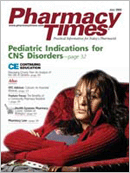Publication
Article
Pharmacy Times
Case Study #2
Author(s):
PD, a 78-year-old woman,was admitted to a longtermcare facility forrehabilitation. She hasdifficulty ambulating dueto a recent ischemicstroke and subsequentleft-sided hemiparesis. Shehas poor nutritional intake due todysphagia. She occasionally experiencesnocturnal urinary incontinence.
On admission, the nurse noted a small 2-cm erythematousregion on the left sacral region without apparent skin breakdown.PD complains of itching at the site.
Three months after PD is admitted, the pharmacist conductshis 90-day chart review. The progress notes in PD's chart statethat the sacral itching has not improved. The pharmacist asks thenurse if he may observe while she examines the site. The areahas progressed to a well-circumscribed ulcer with granulation tissue.There is no eschar present, no odor, and no signs of infection.PD complains of pain in and around the area. The pharmacistappropriately stages the wound as a stage II pressure ulcer.
The pharmacist notices that PD's most recent albuminlevel was 3.0 g/dL. He makes recommendations to PD'sphysician that would improve PD's nutritional status. Thenurse overhears the discussion and asks what serum concentrationof albumin is desired.
What is the desired serum concentration?
Dr. Schlesselman is a clinical pharmacist based in Niantic, Conn.
Click Here For The Answer ----------->
[-]
The desired serum concentration of albumin is between 3.5 and 5.5 g/dL. Patients with poor nutritional status, as reflectedby low albumin concentrations, are at increased risk of developing pressure ulcers and having a slow recovery rate from them.
toggle(getObject('exp1048685570_link'), 'exp1048685570');







